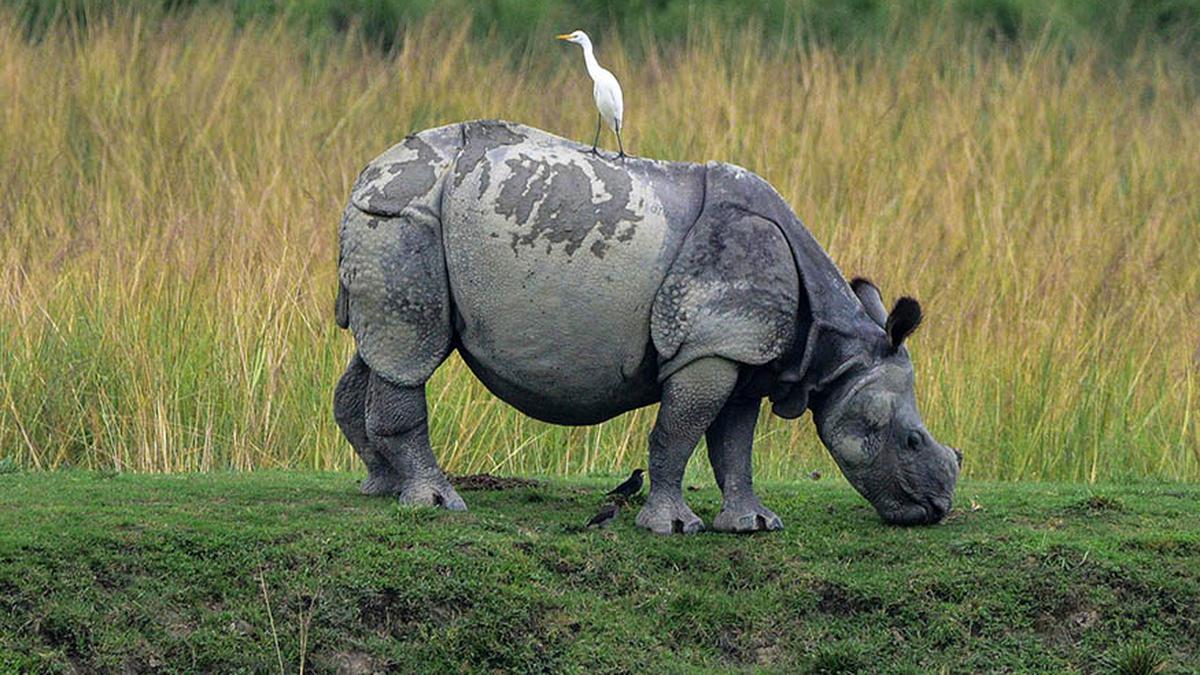
On World Rhino Day, spotlight on ‘Kaziranga model’ of conservation
The Hindu
Kaziranga has a total of 223 anti-poaching camps. This, officials of Assam Forest Department’s wildlife wing said, works out to one surveillance camp every 5.82 sq. km.
GUWAHATI
The ‘Kaziranga model’ of conservation has come to the fore on World Rhino Day 2023. Measuring about 1,300 sq. km, Kaziranga National Park and Tiger Reserve has one of the highest concentrations of anti-poaching camps compared to similar biodiverse areas in South Asia and Africa.
Kaziranga has a total of 223 anti-poaching camps. This, officials of Assam Forest Department’s wildlife wing said, works out to one surveillance camp every 5.82 sq. km.
An anti-poaching camp has at least three personnel guarding a specific area, one of them often from a vantage point atop the camp. Many greater one-horned rhinoceroses wallow in waterbodies close to these camps.
The 19,485-sq. km Kruger National Park in South Africa has one game ranger per 30 sq. km, officials said. The park is home to both the white and the black rhino.
Other rhino-bearing areas such as Serengeti National Park in Tanzania and Etosha National Park in Namibia have fewer guards than Kaziranga, which houses 2,613 rhinos (2022 census), about 70% of the world’s population of one-horned rhinos.
“The Kaziranga model of conservation remains unparalleled in the world due to its time-tested strategy of investing in foot soldiers. This, combined with its unique landscape with a multitude of habitats and a sense of national pride has helped sustain Kaziranga’s outstanding universal value for more than 117 years,” Sonali Ghosh, Kaziranga’s first woman field director told The Hindu on Friday.













